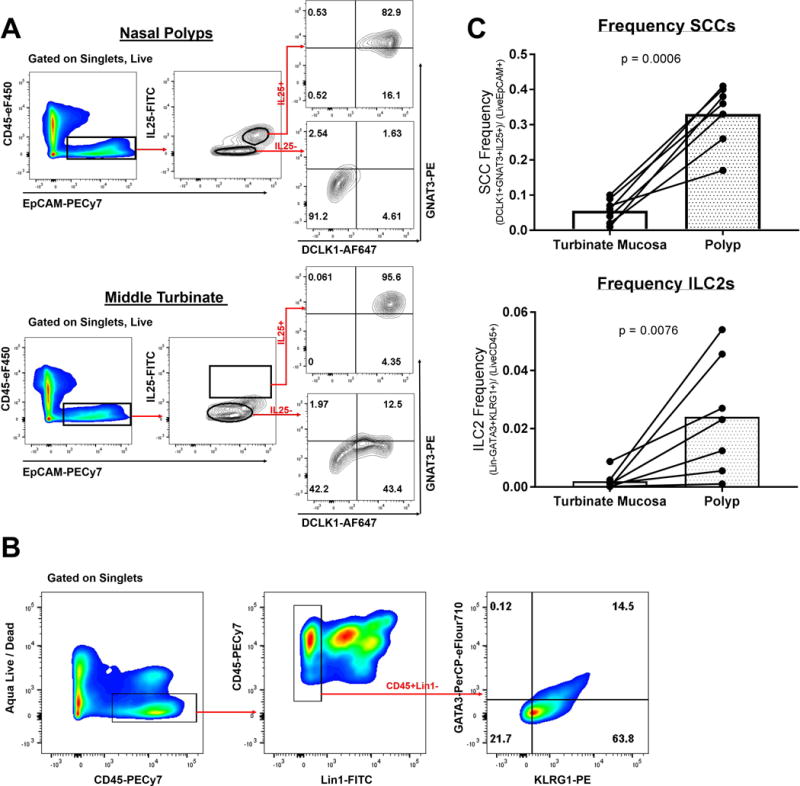Figure 1.

(A) Representative gating strategy of nasal polyp and control middle turbinate tissue samples to identify solitary chemosensory cells, which are defined as Live, EpCAM+, CD45-, IL-25+, DCLK1+, GNAT3+ events. Cells were first gated for singlets and viability (data not shown). Gating was set by FMO negative controls. (B) Representative gating of a nasal polyp sample to identify group-2 innate lymphoid cells, which are defined as Live, CD45+, Lin1-, KLRG1+, GATA3+ events. (C) Comparison of SCC and ILC2 cell frequencies in nasal polyps (n=7) versus turbinate mucosa (n=7) with each line representing a single patient.
